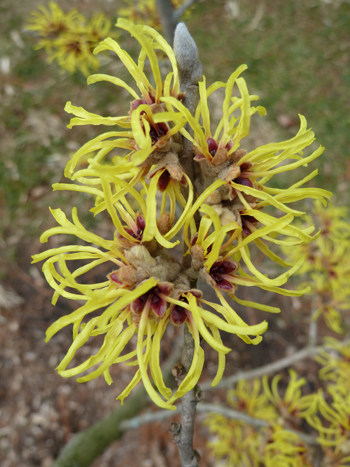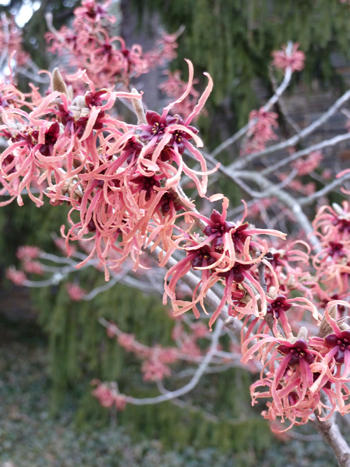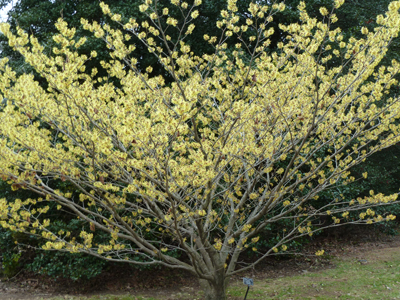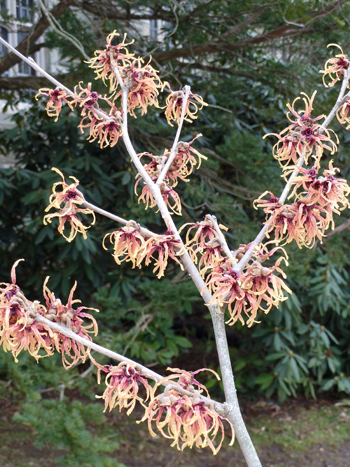 With the warming days has come the blooming of the witch hazels, Hamamelis. These early flowering shrubs are a welcome sign that spring is not too far in the future. The Scott Arboretum boasts one of the largest collections of Hamamelis in the United States. We have many clones of the vernal witch hazel, Hamamelis vernalis; common witch hazel, Hamamelis virginiana; Chinese witch hazel, Hamamelis mollis and many selections of the hybrid between Hamamelis mollis and Hamamelis japonica, Hamamelis x intermedia.
With the warming days has come the blooming of the witch hazels, Hamamelis. These early flowering shrubs are a welcome sign that spring is not too far in the future. The Scott Arboretum boasts one of the largest collections of Hamamelis in the United States. We have many clones of the vernal witch hazel, Hamamelis vernalis; common witch hazel, Hamamelis virginiana; Chinese witch hazel, Hamamelis mollis and many selections of the hybrid between Hamamelis mollis and Hamamelis japonica, Hamamelis x intermedia.

Hamamelis x intermedia ‘Feuerzauber’ photo credit: J. Coceano
The selections of H. x intermedia offer the most interesting ranging from butter yellow to stunning coppery orange. These hybrids combine the yellow colored flowers and fragrance of Hamamelis mollis with the red flowers of Hamamelis japonica. The color range of the flowers is impressive; however, not all the clones are fragrant. Most Hamamalis vernalis and H. mollis clones are fragrant.
Hamamelis ‘Jelena’ photo credit: J. Jenney
This time of year a question that often appears on our blog is which cultivars are best for not retaining their leaves? Unfortunately, some cultivars of witch hazel tend to hold their leaves from the previous fall thus masking the spring flowers. This does not appear to be solely to be a condition of genetics, but also might have to do with weather condition, soil conditions, and possibly the species of witch hazel on which it was grafted.
Last week Josh Coceano, Scott Intern, and I did an assessment of our collection. We noted which cultivars had leaf retention (% leaf retention), as well as grading the fragrance. Download this chart to see our complete findings.

Hamamelis x intermedia ‘Primavera’ photo credit: J. Coceano
I also took the opportunity to subjectively rank my favorite witch hazels for the day (Curator’s Choice). While I love Hamamelis mollis and H. vernalis they do tend to be two species which hold their leaves. Getting my top ranking was H. mollis ‘Wisley Supreme’ and ‘Early Bright’ which do hold some leaves but have fantastic fragrance. H. x intermedia ‘Feurzauber’ is one of the best red flowering clones. For soft sulfur yellow flowers I really like ‘Primavera’. One of my all time favorites is the coppery-orange flowering ‘Jelena’. And, ‘Strawberries and Cream’ is a beautiful suffusion of red, pink and yellow.

Hamamelis x intermedia ‘Strawberries and Cream’ photo credit: J. Coceano
If the weather remains relatively cool we should have outstanding flowering for at least two to three more weeks. Join Julie Jenney for a guided tour of Witch hazels and Early Spring Blooms on Saturday, March 5 from 1 to 2:30 pm.
